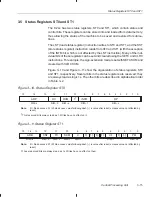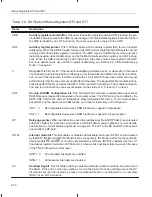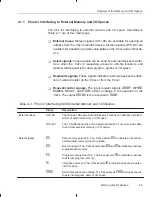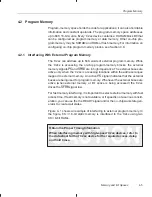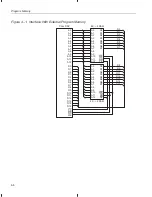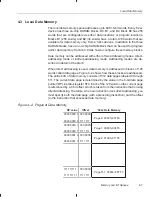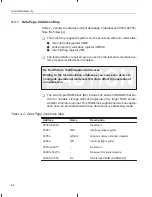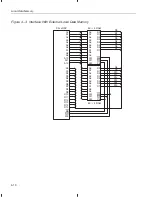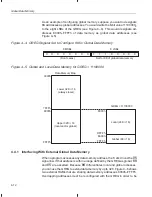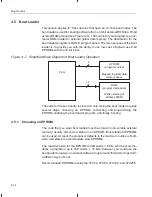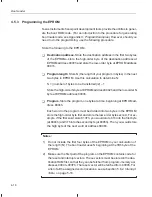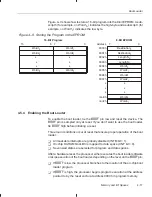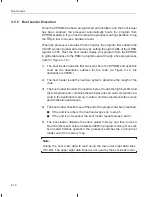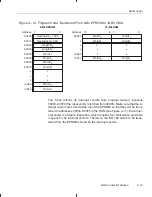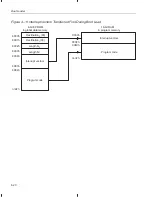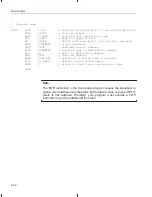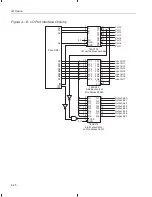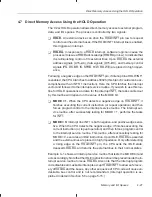
Global Data Memory
4-12
As an example of configuring global memory, suppose you want to designate
8K addresses as global addresses. You would write the 8-bit value 11100000
2
to the eight LSBs of the GREG (see Figure 4–4). This would designate ad-
dresses E000h–FFFFh of data memory as global data addresses (see
Figure 4–5).
Figure 4–4. GREG Register Set to Configure 8K for Global Data Memory
8 MSBs
8 LSBs
X
X
X
X
X
X
X
X
1
1
1
0
0
0
0
0
(Don’t cares)
Set for 8K of global data memory
Figure 4–5. Global and Local Data Memory for GREG = 11100000
Data Memory Map
FFFFh
8000h
0000h
Upper 32K
×
16
(local and/or global)
7FFFh
Lower 32K
×
16
(always local)
GREG = 11100000
Global (8K
×
16)
Local (24K
×
16)
E000h
DFFFh
8000h
FFFFh
4.4.1
Interfacing With External Global Data Memory
When a program accesses any data-memory address, the ’C2xx drives the DS
signal low. If that address is within a range defined by the GREG as global, BR
and DS are asserted. Because BR differentiates local and global accesses,
you can use the GREG to extend data memory by up to 32K. Figure 4–6 shows
two external RAMs that are sharing data-memory addresses 8000h–FFFFh.
Overlapping addresses must be reconfigured with the GREG in order to be

